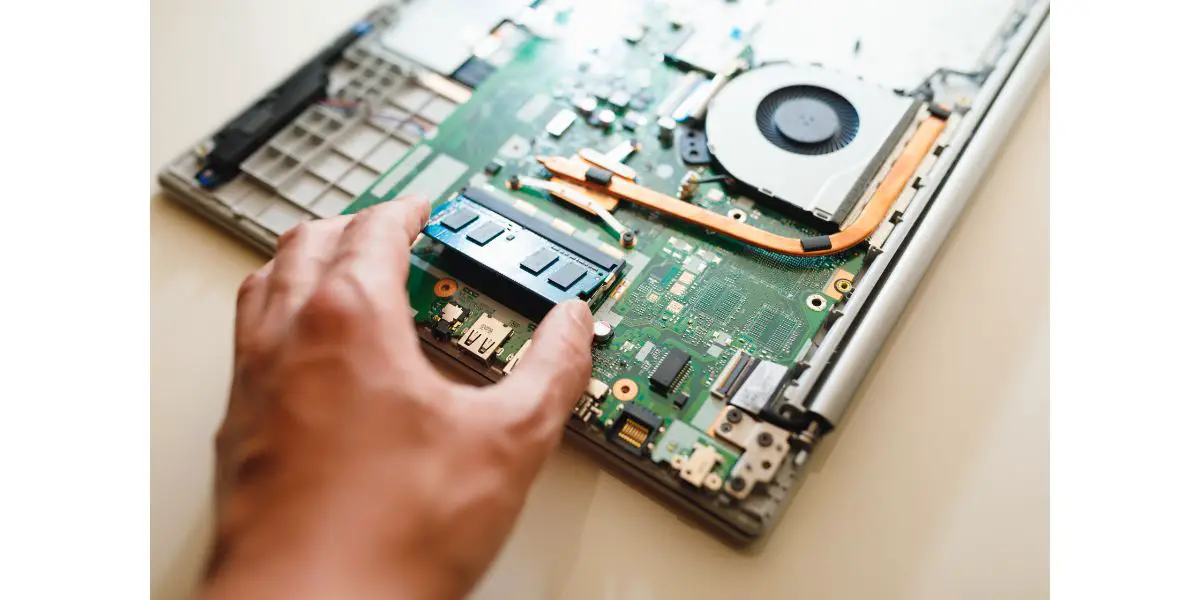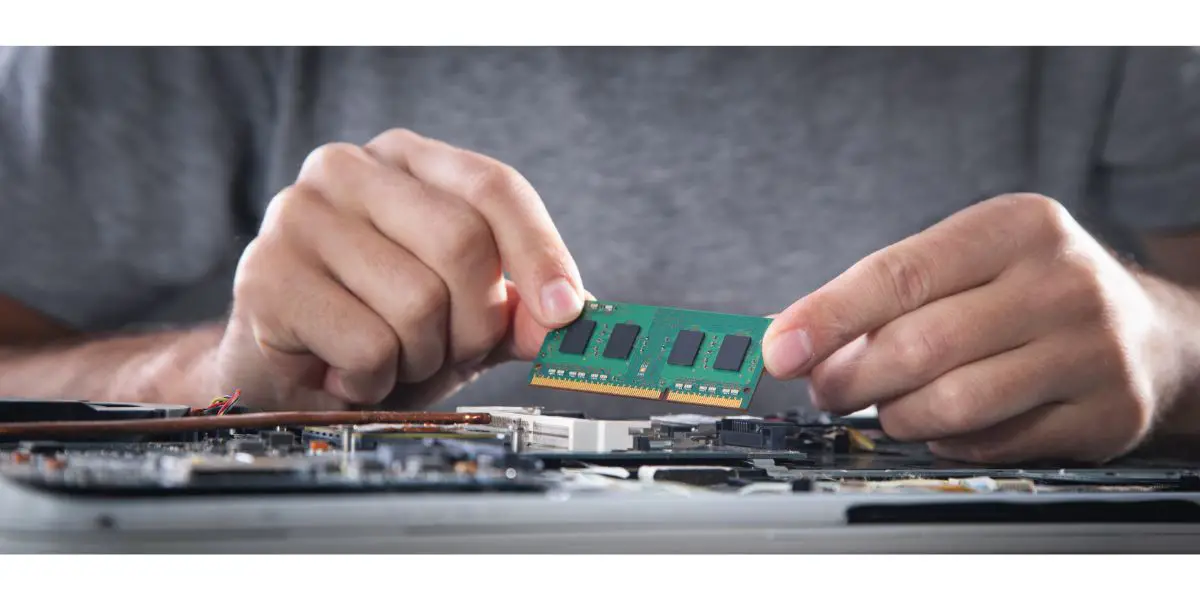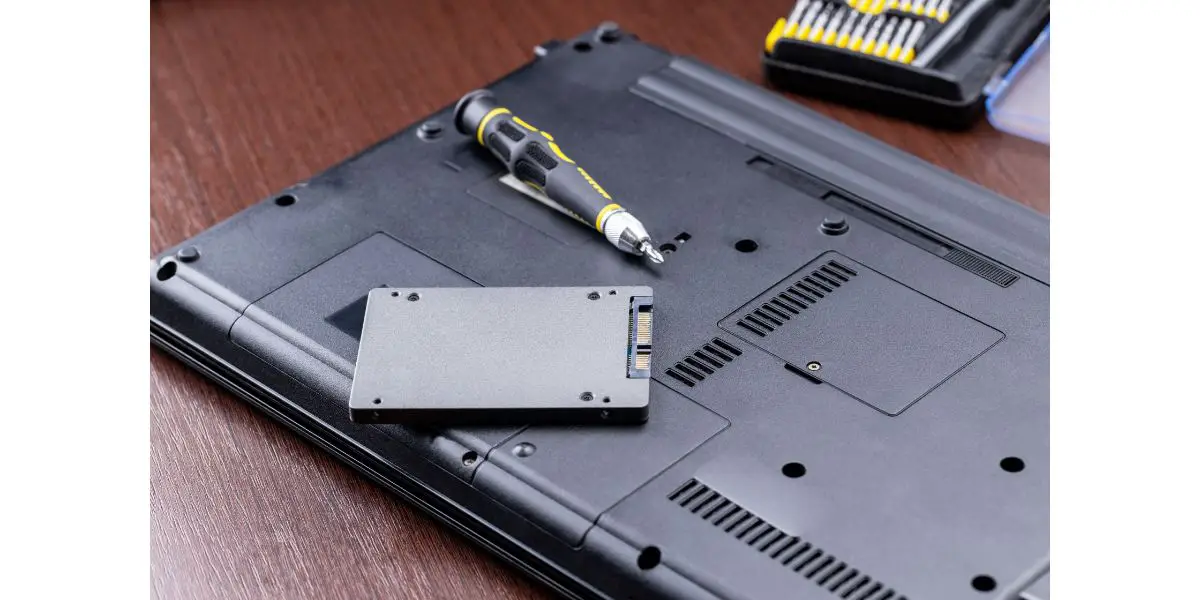Disclaimer: This post may contain affiliate links, meaning we get a small commission if you make a purchase through our links, at no cost to you. For more information, please visit our Disclaimer Page.
The typical user laptop nowadays can handle many tasks with no problem, but it has its limits. When it needs to perform more than it can handle, your device may slow down; this is a signal that you need to upgrade your laptop. There are a few ways in which you can upgrade your laptop to be faster, but upgrading your RAM is one of the best choices.
Table of Contents
Does Upgrading RAM Make a Laptop Faster?
RAM is one of the most crucial components of your laptop. It temporarily stores all the information your computer processes so that it can be retrieved whenever needed without the computer needing to access the information once again.
When the RAM is limited, the amount of information that can be stored and retrieved is also limited. When you need to run more tasks than the RAM can handle, the CPU will need to use your hard drive or SSD for the same purpose. This causes your computer to be slower and sometimes even freeze.
Upgrading your RAM would solve the issue of speed. By adding more space to your laptop’s RAM, you increase the number of tasks it can handle without slowing down. As a result, your device works faster, even when you’re using particularly complex programs.
However, you should make sure that insufficient RAM is the true reason your laptop is starting to slow down. The slowness might be a result of overheating, low hard drive capacity, malware, and more. In these cases, more RAM would not solve your issue.
How Do You Know if You Need More RAM?
Because a slow laptop can have many different issues, you need to make sure that it actually needs more RAM to speed up, so you need to learn what the problem is in the first place. You can see some common signs that show you that more RAM is the solution, but you can also make sure by checking some settings on your laptop.
The general slowness and occasional freezing are only some of the problems that point toward the issue of insufficient RAM. However, you should check for some other signs that can help you confirm this problem. To be 100 percent sure, you can check the Task Manager.
Here are some signs you can look for to make sure you need more RAM:
- You can’t run different programs simultaneously.
- It takes a while for a file to open after you click on it.
- Your computer randomly reboots without you doing anything.
- You see a memory error message.
- You see the Blue Screen of Death sometimes.
If you want to be absolutely sure that you need more RAM before upgrading it, you can check the Task Manager:
- Press Ctrl, Alt, and Delete simultaneously, or just write Task Manager on the search bar.
- Select Task Manager.
- Go to the Performance tab.
- Find the Physical Memory box on the lower right.
- If it is 80 percent or more, you may need an upgrade.
You should check these settings as soon as you boot your laptop to ensure that you see the RAM usage when you’re not running many tasks simultaneously.
How Much RAM Do You Need?
Before you start worrying about upgrading your RAM, you should know how much RAM a typical laptop needs. Most devices nowadays are made considering the tasks that a regular user would need the computer to perform on a daily basis, and the RAM capacity is supposed to reflect it.
In the past, typical laptops would have 4GB of RAM, which was enough considering the level of sophistication of the programs and the limited internet usage. However, nowadays, this amount of RAM can be insufficient, which explains why those who have older laptops typically need to upgrade them.
Generally, most users don’t need more than 8GB of RAM, which most laptops offer nowadays. However, those who work with more CPU-heavy programs may need 16GB, considering the extra tasks the laptop will need to perform.
Any more than 16GB of RAM might not make a difference in speed, even for more advanced computers. In rare cases, some people might need an upgrade because of very complex and CPU-intensive programs, but most people don’t need to go beyond 16 or even 8GB of RAM.
How To Check if You Can Upgrade Your RAM
Once you have determined that your laptop needs more RAM, you need to consider all your options and consider all the steps you need to take for the upgrade. However, before you purchase anything, you must ensure you have space to upgrade your RAM.
To be able to upgrade the RAM on your laptop, you should use the designated slots that allow you to add RAM sticks. Because these slots take up some space, a lot of companies are not using them anymore, opting for soldering the RAM down for a slimmer device.
However, other laptops allow you to upgrade your RAM by including the slots. Gaming laptops, in particular, are made to be upgraded in different ways, so you can be almost 100 percent sure that you will find the RAM slots on them.
In either case, you have no way of knowing just by looking at your device from outside. To make sure that you can or cannot upgrade your laptop, you should check the settings on the device by following these steps:
- Go to Task Manager by pressing Ctrl, Alt, and Delete or by typing it into the Search bar.
- Find the Performance tab.
- Select Memory.
- A window with different specifications will appear; check out the Form Factor on the right.
- If it says SODIMM, you can upgrade your RAM by adding sticks on the designated slots; otherwise, the RAM is soldered down, and you can’t upgrade it.
Available Slots on Laptops
The Memory window will also show you how many slots your laptop uses. Laptops can have anywhere between two and four RAM slots, and usually, they have a free one to allow upgrades. However, even if the Memory tab says that all slots are being used, you can remove them and replace them with higher-capacity slots to upgrade your RAM.
If you have a Mac, you don’t have to check; all Macs nowadays have soldered-down RAM components, so you can’t upgrade your RAM. However, the existing RAM in Macs is usually enough for most tasks, and you still have other solutions you can try.
How To Upgrade Your RAM
Once you have confirmed that you need more RAM and that you can upgrade it on your laptop, all that’s left is to make the upgrade. You can add the RAM sticks to the slots on your device by yourself, but it is a relatively complicated process. You can also take your laptop to a specialist if you want.
Here are the steps that you need to take to upgrade your RAM:
- Find out the type of RAM you need.
- Buy the right RAM stick/s.
- Turn off your device.
- Remove the bottom of the laptop.
- Find the RAM.
- Remove the existing RAM if you need to.
- Install the new sticks in the appropriate slots.
- Reassemble your laptop.
- Turn on your device.
- Check if the RAM has been installed successfully.
Typically, you don’t need any special tools for this process; you may only need a screwdriver to open the bottom part of your laptop. It doesn’t necessarily require any special skills either, as long as you read beforehand about what the RAM is supposed to look like and what you need to do. While working on your laptop, you should be careful not to damage any other parts.
RAM vs. SSD Upgrade
When your laptop performance is suffering, you can also try upgrading your hard drive to an SSD for a smoother and faster performance. The RAM and the hard drive are not really comparable considering their purposes, but upgrading them can lead to more or less the same solution: a faster device.
Even though upgrading your RAM and upgrading to an SSD both improve the performance of your laptop, they solve different problems. You should first identify the problem with your device before making a decision.
As I explained above, you should upgrade your RAM when you notice signs of slowing down and confirm that most of your existing RAM is already in use. However, when the amount of RAM you have is enough, you may consider upgrading to an SSD.
SSDs, or solid-state drives, are superior to hard drives in many ways. They can offer more storage space and are much faster than hard drives. Upgrading to an SSD may solve the performance issues if RAM seems to be adequate for your laptop.
In general, upgrading your RAM is the best solution to speed up your laptop; as fast as SSDs are, they are still slower than RAM. When you don’t have enough RAM, your laptop will need to use your SSD as a last resort, which will still be slow. Understandably, upgrading your RAM will cost more than upgrading to SSD.
Final Thoughts
Your laptop may slow down when it’s working beyond its RAM capacity, which can happen when it performs many tasks simultaneously. To solve this problem, you can upgrade the RAM on your laptop by adding more RAM sticks, or replacing the existing ones with higher-capacity sticks if your laptop allows you to.



